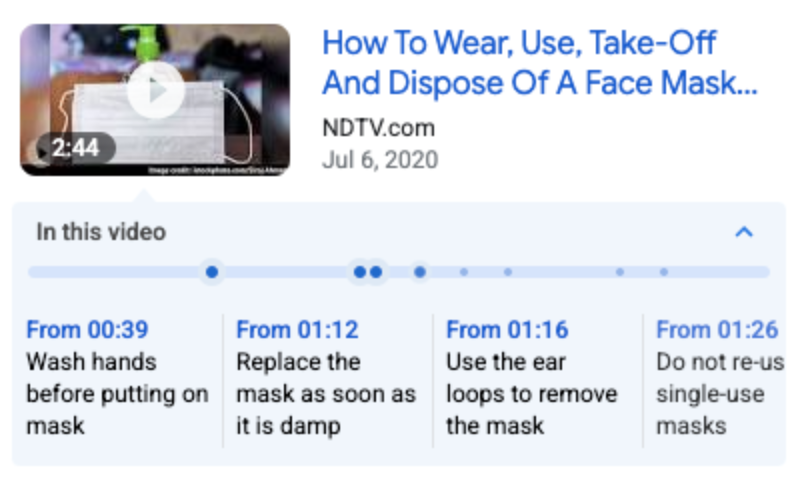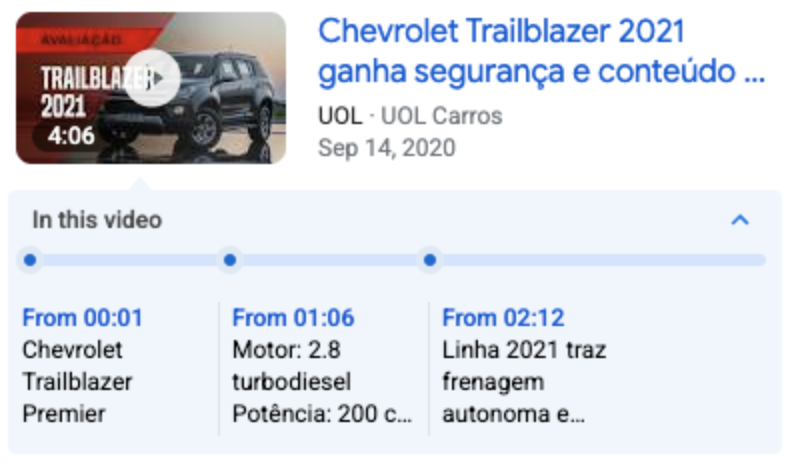Lunedì 19 luglio 2021
Da quando sono stati lanciati per la prima volta i momenti chiave dei video nel 2019, abbiamo continuato ad ampliare e migliorare la funzionalità. Abbiamo aggiornato il design e introdotto i momenti chiave in più video, sia da dispositivi mobili che da computer desktop, in tutte le aree geografiche in cui è disponibile la Ricerca Google. I momenti chiave aiutano sempre più persone a individuare direttamente i segmenti più rilevanti dei video e a esplorarli come fossero i capitoli di un libro.
Oggi introduciamo un nuovo modo per consentirvi di abilitare i momenti chiave per i video sul vostro sito, senza dover etichettare manualmente ogni segmento. Dovete solo indicare a Google il pattern URL per passare a un timestamp specifico all'interno del video; a questo punto, Google utilizzerà l'AI per identificare i momenti chiave del video e mostrerà dei link diretti a questi momenti nei risultati della Ricerca.


Abbiamo annunciato il beta test del markup SeekToAction in occasione di Google I/O e, a partire da oggi, usciremo dalla fase beta e supporteremo questo markup per qualsiasi sito con video. Ecco alcuni suggerimenti da tenere in considerazione per l'implementazione di questo markup:
- Deve essere possibile creare nell'URL un link diretto a un punto specifico del video diverso dall'inizio. Ad esempio,
https://www.example.com/example?t=30fa partire il video a 30 secondi dal suo inizio. - Utilizzate il markup
SeekToActionin tutte le pagine dei video in cui volete che Google identifichi automaticamente i momenti chiave e seguite le nostre linee guida aggiuntive. Ecco un esempio dettagliato. - Per identificare automaticamente i momenti chiave nel video, Google deve essere in grado di recuperare i file dei contenuti video.
Tenete presente che il markup SeekToAction si applica solo ai video incorporati nel vostro sito. Se pubblicate video su piattaforme di terze parti in cui non avete il controllo del markup di schema.org, potete contattare le piattaforme in questione per verificare se questo markup è supportato.
Ci auguriamo che troviate il markup SeekToAction un modo più semplice ed efficiente per attivare i momenti chiave e che questo contribuisca a far interagire meglio le persone con i vostri video. In caso di domande, pubblicatele nel forum, contattate @googlesearchc su Twitter o inviate un feedback direttamente nelle pagine della nostra documentazione.
